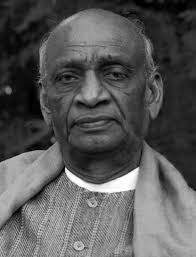
Sardar
Sardar Vallabhbhai Patel was an Indian independence activist. He was born on 31 October 1875. Sardar Vallabhbhai Jhaverbhai Patel was born in Nadiad, Gujarat. He was a senior leader of the Indian National Congress and played a significant role in the Indian Independence Movement. He was appointed as the 49th President of Indian National Congress. He was often called as Sardar, meaning “Chief” in Hindi.
He served as the first Deputy Prime Minister and Home Minister of India from 1947 to 1950. He acted as the Home Minister during the Indo-Pakistani war of 1947. Under the chairmanship of Patel “Fundamental Rights and Economic Policy” resolution was passed by the Congress. On 7 August 1942, Patel gave a speech to people at Gowalia Tank in Mumbai for promoting Quit India Movement. When Patel was first Home Minister and Deputy Prime Minister of India, he organized relief efforts for refugees fleeing from Pakistan to Punjab and Delhi. Patel, Jawaharlal Nehru and Louis Mountbatten together persuaded princely states to accede to India.
Sardar Vallabhbhai Patel met Mohandas Karamchand Gandhi for the 1st time in Gujarat Political Conference in Godhra. He became the secretary of the Gujarat Sabha. He quit his hard-earned job and joined a movement for removing the tax paying policy by the citizens of Kheda. He was elected as president of Gujarat Pradesh Congress Committee in 1920. He also joined Gandhis Non-Cooperation Movement and travelled West India to recruit more than 3,00,000 members. He led the Satyagraha movement in Nagpur in 1923 against the British when Mahatma Gandhi was imprisoned. He also worked against alcoholism, untouchability, caste discrimination and empowerment of women. Vallabhbhai Patel earned the title of Sardar during Bardoli Satyagraha in 1928 which made him popular through the country. The impact was so great that the Nehru suggested Vallabhbhai Patel’ s name to Mahatma Gandhi for presidency of the Congress. Sardar Vallabhbhai Patel got arrested by British during Salt Satyagraha in 1930. He was a supporter of Gandhi against his Swarajist critics.
Members of Congress asked Sardar Vallabhbhai Patel to lead Satyagraha in Nagpur in 1923 against the British law banning the raise of Indian flag. Patel offered a settlement for release of all the prisoners and allowing all the nationalists to hoist the Indian flag in public. He returned to independence struggle in Ahmedabad from his municipal duties when Bardoli suffered from a serious steep tax hike. He was elected as president of Congress for 1931 session in Karachi after signing of Gandhi-Irwin Pact. He used his position as Congress president to return the confiscated lands to farmers in Gujarat. His main priorities were increasing the minimum wages of workers and removing the untouchability. Sardar Vallabhbhai Patel and Mahatma Gandhi both were arrested in London in 1932 after the failure of the Round Table Conference. They were imprisoned in Yeravda Central Jail. Patels high-level position in Congress was largely connected with his role from 1934 onwards when Congress abandoned boycott of elections in the party. He guided the ministries with aim of maintaining party discipline. He opposed Nehru regarding the acceptance of socialism at 1936 Congress session as he believed that it could be a diversion from main goal of achieving independence.
Sardar Vallabhbhai Patel supported Nehru’s decision to withdraw Congress from central and provincial legislatures after the outbreak of World War 2 in the year 1939. He participated in Gandhi’ s call for individual disobedience and was arrested and imprisoned in jail. He gave his best speech when he spoke at Gwalia Tank Ground in Mumbai to launch nationwide civil disobedience movement in the year 1942. He also opposed the Cripps mission in 1942. British arrested Patel and the entire congress working committee in 1942 during Quit India Movement.
Sardar Vallabhbhai Patel played a great role in India’ s Independence. Jawaharlal Nehru considered Patel as the strongest pillar of the Cabinet. He was one of the first congress leader to accept the partition of India. When Patel knew that large group of Sikhs were preparing to attack Muslim convoys heading for Pakistan, he went to Amritsar to meet Hindu and Sikh leaders. He said that Sikh actions would result in attack against Hindus and Sikhs who live in Pakistan. He assured the leaders about the safety of Muslims and to establish peace. As Deputy minister Vallabhbhai Patel played a key role in integration of 565 princely states into Indian Union. Princely states like Travancore, Junagadh, Hyderabad, Bhopal and Kashmir were not ready to merge in Independent India. He used his power and forced to annex the princely states of Junagadh ruled by Nawab and Hyderabad ruled by Nizam as they were not ready to merge with Union of India. He never wanted foreign interference in a bilateral affair. He also opposed the fund of Rs 550 million to Pakistan Government as he thought Pakistan Government will use this finance for a war against Indians in Kashmir. He was a senior leader in the Constituent Assembly of India. He was responsible for shaping India’ s constitution. He is also founder of Indian Administrative Service. He is also known as the patron saint of India’ s services. Sardar Vallabhbhai Patel died on 15 December 1950.
Rashtriya Ekta Diwas or National Unity Day was introduced and inaugurated by Government of India and Indian Prime Minister Narendra Modi in 2014. His birth anniversary is celebrated as Rashtriya Ekta Diwas because when he was Home Minister of India, he played a key role in India’ s freedom movement and contributed in integrating 565 princely states to a newly independent India by Indian Independence Act. The Statue of Unity is the world’ s tallest statue with a height of 182 metres located near Kevadia in the state of Gujarat, India. The Statue of Unity is dedicated to Sardar Vallabhbhai Patel. The statue is located in Gujarat on the Narmada River. The Statue of unity is constructed facing Sardar Sarovar Dam. It was inaugurated by Prime Minister of India, Narendra Modi in year 2018.
Sardar Vallabhbhai Patel is also known as Iron Man of India. He was a great and selfless leader who placed country’ s interest first and above everything else. The contribution made by Sardar Vallabhbhai Patel in building a unified India needs to be remembered by every citizen of India
By: Srutimayee Padhy
Write and Win: Participate in Creative writing Contest & International Essay Contest and win fabulous prizes.


